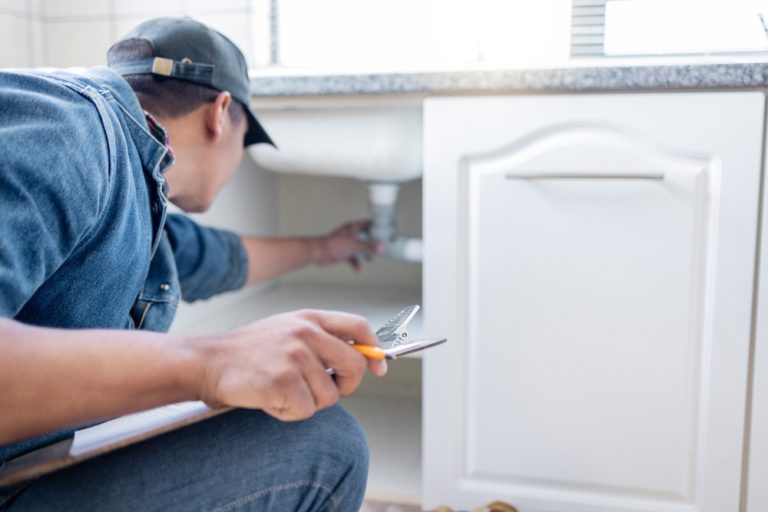Have you ever heard a loud knocking noise coming from your pipes? Or maybe an annoying rattle that just won’t go away? If so, you’re not alone. Homeowners often face these frustrating plumbing issues, which can lead to bigger problems if not addressed promptly. These sounds can be caused by a variety of factors, such as water hammer, loose pipes, or even changes in water pressure.
In this comprehensive guide, we’ll explore the causes of rattling and knocking pipes in detail, provide step-by-step instructions on how to diagnose the problem, and offer practical solutions to fix it. Whether you’re dealing with an occasional rattle or a persistent knocking, understanding the root cause is the first step towards a quieter, more peaceful home. Don’t let these seemingly minor issues turn into major headaches; learn how to tackle them head-on and protect your residential plumbing system.
Common Causes of Rattling and Knocking Pipes
Pressure Reducing Valve (PRV) Issues
Most commonly, rattling and knocking pipes are the result of a faulty Pressure Reducing Valve or PRV. The Pressure Reducing Valve (PRV) is a crucial component in your plumbing system. It helps regulate the water pressure entering your home, ensuring it’s at a safe and manageable level. However, if the PRV is faulty or improperly set, it can cause your pipes to make those dreaded noises.
A malfunctioning PRV can lead to water pressure that’s too high, resulting in rattling and knocking sounds. It’s essential to inspect and adjust the PRV regularly to prevent these issues. If you’re unsure how to do this, don’t worry; we’ll cover it in detail later in this guide.
Water Hammer
Water hammer is another common cause of knocking pipes. But what exactly is it? Water hammer occurs when flowing water suddenly stops or changes direction, creating a shockwave that travels through the pipes. This shockwave can cause the pipes to knock against each other or the walls, producing that familiar banging noise.
Common triggers for water hammer include quickly shutting off a faucet, a malfunctioning appliance, or even flushing the toilet. For instance, when a washing machine or dishwasher abruptly stops the water flow, or a toilet valve swiftly closes, it can result in a sudden change in water momentum, causing those disturbing sounds.
Identifying and addressing the causes of water hammer, such as loose pipes or high water pressure, can help eliminate the problem. Your plumber can check your pipes to make sure they are tight and sealed, and adjust water pressure throughout your home to help alleviate the problem. They might also install devices like water hammer arrestors or air chambers that absorb the shock and reduce the noise. Taking these steps not only ensures a quieter home but also prolongs the lifespan of your plumbing system.
Loose Pipes
Loose or improperly secured pipes can also be a significant source of rattling noises. Over time, the constant flow of water can cause pipes to shift, making them unstable and prone to movement. This movement results in rattling sounds that can be both annoying and concerning for homeowners. Such noises not only disrupt the peace but can also signal potential problems that might lead to more serious issues if left unaddressed.
Ensuring your pipes are securely fastened with appropriate clips and supports is vital for maintaining a quiet and efficient plumbing system. Properly secured pipes reduce the chances of leaks and prevent long-term damage to your plumbing infrastructure. We’ll provide detailed tips on how to check and reinforce your pipes later in this guide, including the types of clips and supports to use and how to install them correctly. By taking these steps, you can ensure a quieter, more reliable plumbing system in your home.
Diagnosing the Plumbing Issue
Checking the PRV
To begin diagnosing the rattling and knocking noises, start with the PRV. Here’s a step-by-step guide to help you inspect and adjust it:
- Locate the PRV: Typically, it’s near the main water shut-off valve.
- Check the Pressure: Use a pressure gauge to measure the water pressure. It should be between 40-60 psi.
- Adjust the PRV: If the pressure is too high or low, adjust the PRV settings according to the manufacturer’s instructions.
Signs that the Pressure Reducing Valve (PRV) might be malfunctioning include fluctuating water pressure, continuous noise such as banging or hissing, or visible damage to the valve, such as cracks or leaks. Additionally, you may notice inconsistent water flow or unusual water hammer sounds in the plumbing system, which can also indicate issues with the PRV. Regular maintenance and prompt attention to these signs can help prevent further damage to your plumbing.
Identifying Water Hammer
Next, determine if water hammer is causing the knocking sounds. Here are some methods to identify it:
- Listen for Timing: Note if the noise occurs when you shut off a faucet or an appliance finishes its cycle.
- Inspect Appliances: Check if washing machines, dishwashers, or other water-using appliances are the culprits.
- Install Water Hammer Arrestors: These devices can help absorb the shockwave and prevent the noise.
If you notice the knocking sound only when certain actions occur, such as turning off faucets or flushing toilets, it’s likely due to a phenomenon known as water hammer. This occurs when water flow is suddenly halted, causing shockwaves that create the knocking noise. Addressing these specific triggers, such as installing water hammer arrestors or adjusting water pressure, can help mitigate the issue and protect your plumbing system.
Inspecting for Loose Pipes
Finally, check if loose pipes are causing the rattling noises. Follow these steps:
- Visually Inspect Pipes: Look for pipes that are visibly loose or have shifted from their original position.
- Test for Movement: Gently wiggle the pipes to see if they move easily.
- Reinforce Pipes: Secure any loose pipes with appropriate clips or supports.
Reinforcing loose pipes can significantly reduce rattling noises, which often occur due to water pressure changes or vibrations within the plumbing system. By securing these pipes, you not only minimize noise disturbances but also ensure a more stable and reliable plumbing system that is less prone to leaks and other issues.
Stop the Noise
Rattling and knocking pipes can be a significant nuisance in residential and commercial plumbing, but understanding the common causes and how to diagnose and fix them can make a world of difference. By addressing issues like PRV malfunctions, water hammer, and loose pipes, you can ensure a quieter and more efficient plumbing system.
Don’t ignore these noises; taking prompt action can prevent more severe problems down the line. If you’re unsure where to start or need expert assistance, call us.

